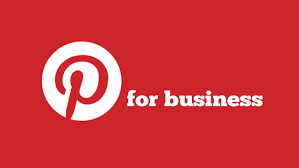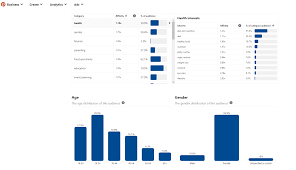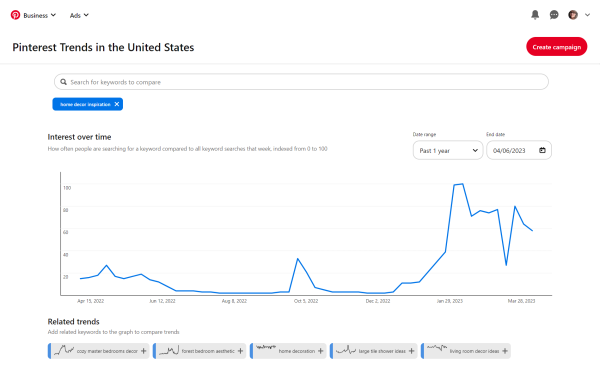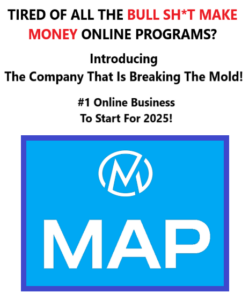In the evolving landscape of digital marketing, Pinterest emerges as a unique and powerful platform, particularly for affiliate marketing. Known for its visual appeal and a user base that actively seeks inspiration and recommendations, Pinterest offers an unparalleled opportunity for affiliate marketers to connect with their audience in meaningful ways.
Unlike other social media platforms where content can quickly become lost in the noise, Pinterest allows for the discovery and sharing of ideas that resonate with users’ interests and intentions, making it an ideal space for promoting affiliate products.
The potential of Pinterest for affiliate marketing cannot be understated. With millions of active users turning to Pinterest for ideas, solutions, and products, affiliate marketers have a vast audience ready to engage with their content.
Whether it’s the latest trends in home decor, innovative making money tips, or the best tools for creative projects, Pinterest users are on the lookout for content that adds value to their lives. This opens up a world of opportunities for affiliate marketers to showcase products and services through well-crafted pins that captivate and inform.
However, the effectiveness of affiliate marketing on Pinterest hinges on two crucial principles: authenticity and providing value. In a digital age where consumers are bombarded with advertisements and sponsored content, authenticity stands out.
Pinterest users are savvy; they seek genuine recommendations and trust affiliate marketers who share products they truly believe in. Authenticity fosters trust, and trust, in turn, builds a loyal following.
Providing value is at the heart of successful affiliate marketing on Pinterest. It’s not just about promoting products; it’s about creating content that enriches users’ Pinterest experience. This means designing pins that are not only visually appealing but also informative, inspiring, or problem-solving.
Whether it’s a detailed guide on how to use a product, creative ideas that incorporate the product, or honest reviews, value-driven content encourages users to engage, share, and ultimately, make purchases through affiliate links.
As we delve deeper into the world of Pinterest affiliate marketing, we’ll explore strategies for setting up a successful account, developing engaging content, leveraging affiliate links effectively, and growing an engaged audience.
The journey to Pinterest affiliate marketing success is both exciting and rewarding, offering a creative outlet to share your passion while generating income through thoughtful and authentic affiliate promotions.
Setting Up for Success
Success on Pinterest, particularly in the realm of affiliate marketing, begins with laying a solid foundation. This involves not just understanding the platform’s mechanics but also strategizing content creation and audience engagement. Here’s how to get started:
Creating a Business Account

Steps to Convert or Set Up a Pinterest Business Account:
- Start Fresh or Convert: If you’re new to Pinterest, you can directly sign up for a business account. However, if you already have a personal account, consider converting it. This is easily done through your account settings, where you’ll find an option to switch to a business account.
- Fill in Your Details: Whether starting anew or converting, you’ll need to enter details about your business, including your business name and website. Make sure these are aligned with your affiliate marketing goals and the niche you aim to target.
- Verify Your Website: Pinterest allows you to verify your website, which adds credibility to your account and unlocks additional features like rich pins. This step is crucial for affiliate marketers as it establishes trust with your audience.
- Complete Your Profile: A complete, well-thought-out profile is your first opportunity to connect with your audience. Include a clear, engaging bio and a profile picture that reflects your brand, whether it’s a logo or a personal photo if your brand is closely tied to your identity.
The Benefits of a Business Account:
- Access to Analytics: A business account on Pinterest grants you access to the platform’s analytics, which provides valuable insights into how your content is performing, who your audience is, and what they engage with the most.
- Ads Manager: Even if you’re not planning on using paid advertisements right away, having access to Pinterest’s Ads Manager is beneficial. It’s a powerful tool for expanding your reach and promoting your affiliate products to a wider audience when you’re ready.
- Rich Pins: Business accounts can utilize rich pins, which offer more detailed information and direct links back to your website. This can be particularly useful for affiliate marketing, as it makes each pin more informative and actionable.
Building Your Pinterest Strategy

Importance of Understanding Your Audience:
- Know Their Interests: Dive into analytics and use Pinterest’s search function to understand what your target audience is interested in. This knowledge will guide your content creation, ensuring it resonates with your followers.
- Understand Their Challenges: Identify common problems or questions your audience faces. Affiliate marketing thrives on offering solutions, so aligning your content with your audience’s needs can significantly enhance engagement and conversions.
Developing a Content Strategy That Aligns with User Interests and Search Habits:
- Keyword Research: Use Pinterest’s search bar to discover popular keywords related to your niche. Incorporating these keywords into your pin titles, descriptions, and even your board names can improve your visibility on the platform.
- Content Variety: Plan a mix of content types, from how-to guides and tutorials to product reviews and comparison posts. This variety keeps your audience engaged and allows you to promote affiliate products naturally within valuable content.
- Consistency is Key: Develop a posting schedule that keeps your account active and engaging without overwhelming your followers. Consistency helps build momentum and keeps your audience looking forward to your content.
- Engagement Plan: Decide how you’ll engage with your audience. Will you respond to comments on your pins? How will you encourage users to interact with your content? Engagement not only boosts your relationship with your audience but also signals to Pinterest that your content is valuable, potentially increasing your reach.
By setting up your Pinterest account for success and crafting a strategic plan that aligns with your audience’s interests and search habits, you lay the groundwork for a thriving affiliate marketing presence on the platform.
Developing Your Content
Creating compelling content on Pinterest is pivotal for capturing the interest of your audience and driving affiliate marketing success. This involves not just designing individual pins but also curating engaging boards and optimizing your pins for discovery. Here’s how to approach content development on Pinterest:
Creating Engaging Boards

How to Choose Board Topics Relevant to Your Niche:
- Align With Audience Interests: Consider the broad interests of your target audience within your niche. For instance, if you’re in the gardening niche, board topics could range from “DIY Home Organization Hacks” to “Fitness Challenges and Workouts.”
- Spotlight on Products: Create boards that focus on product categories relevant to your affiliate marketing. A board titled “Tech Gadgets and Innovations” can be a great way to introduce and link to affiliate products.
- Trending Topics: Keep an eye on trending topics within your niche that you can capitalize on. Pinterest’s “Trends” tool can be invaluable for this.

Tips for Organizing and Curating Boards for Maximum Engagement:
- Categorize Wisely: Ensure your boards are clearly categorized, making it easy for users to find exactly what they’re interested in. This organization enhances user experience and can keep them engaged longer.
- Quality Over Quantity: Curate your boards carefully, choosing pins that offer value, whether through information, inspiration, or entertainment. High-quality pins are more likely to be repinned and shared.
- Regular Updates: Regularly update your boards with new pins to keep them fresh and engaging. This also gives users a reason to come back.
Designing Effective Pins
Best Practices for Creating Visually Appealing Pins:
- High-Quality Images: Use clear, high-resolution images that immediately grab attention. Bright and visually appealing images tend to perform better on Pinterest.
- Text Overlay: Incorporate text overlays on your pins to make them informative at a glance. Ensure the text is legible and complements the image without overwhelming it.
- Brand Consistency: Keep a consistent style across your pins, including fonts, colors, and imagery style. This consistency helps in building brand recognition.
Utilizing Canva for Design: A Beginner’s Guide:
- Leverage Templates: Canva offers a wide range of Pinterest-specific templates. Start with these templates to create professional-looking pins quickly.
- Customize for Your Brand: Customize templates with your brand colors, fonts, and logos. Canva’s drag-and-drop interface makes this easy, even for beginners.
- Explore Canva’s Features: Utilize Canva’s features like filters, icons, and elements to enhance your pin designs. Experiment with different layouts to see what resonates with your audience.
Writing Descriptions and Titles
Importance of SEO in Descriptions and Titles:
- Boost Discoverability: Optimizing your pin titles and descriptions with relevant keywords can significantly improve their visibility in search results, making it easier for your target audience to discover your content.
- Convey Value: A well-crafted title and description not only help with SEO but also convey the value of the pin to potential viewers, encouraging clicks and engagement.
How to Use Keywords Effectively for Discoverability:

- Keyword Research: Use Pinterest’s search feature to find popular keywords in your niche. Include these keywords naturally in your pin titles and descriptions.
- Be Descriptive but Concise: While it’s important to include keywords, ensure your titles and descriptions are informative and to the point. Pinterest limits the visible amount of text, so make your first few words count.
- Call to Action: Where appropriate, include a call to action in your description, encouraging users to click through to learn more, try a product, or explore a topic further.
By developing your content thoughtfully, focusing on creating engaging boards, designing effective pins, and optimizing your titles and descriptions for SEO, you set the stage for a successful Pinterest affiliate marketing strategy. This approach not only enhances the appeal of your content but also drives engagement, shares, and ultimately, affiliate conversions.
Leveraging Affiliate Links on Pinterest
Effectively using affiliate links on Pinterest is key to monetizing your content and driving revenue through affiliate marketing. There are two primary methods for incorporating affiliate links into your Pinterest strategy: direct linking and linking to a blog post where the affiliate links are housed. Each method has its advantages and challenges:
Direct Linking vs. Blog Integration
Pros and Cons of Direct Affiliate Linking:
- Pros:
- Simplicity: Directly linking to affiliate products simplifies the process for users, taking them straight to the product page.
- Quick Conversions: It can potentially lead to quicker conversions since it reduces the steps a user must take to reach the affiliate product.
- Cons:
- Less Context: Users receive less context about the product. Without additional content to convince them of the product’s value, they may be less likely to make a purchase.
- Potential for Link Issues: Affiliate programs and Pinterest’s guidelines change. Direct links that become non-compliant can lead to pin removals or account issues.
Pros and Cons of Linking to a Blog Post:
- Pros:
- More Information: A blog post can provide comprehensive details, reviews, and use cases for a product, offering more value to the user and potentially increasing conversion rates.
- SEO Benefits: Driving traffic to your website can boost your site’s SEO, increasing your overall online visibility.
- Flexibility: If affiliate links or programs change, you can update your blog post without having to revise or delete pins.
- Cons:
- More Steps for Users: Users have to go through an additional step to reach the affiliate product, which could potentially reduce conversion rates.
- Requires Content Creation: You need to create and maintain a blog, which requires additional effort and resources.
Guidelines for Using Affiliate Links on Pinterest:
- Disclose Affiliate Links: Always be transparent with your audience by disclosing that your pins contain affiliate links. This can be done in the pin description.
- Follow Pinterest’s Rules: Pinterest has specific guidelines for affiliate links. Ensure your strategy complies with these to avoid penalties or account suspension.
- Avoid Link Shorteners: Pinterest advises against using link shorteners for affiliate links as they can obscure the final destination, leading to trust issues and potentially violating guidelines.
Choosing the Right Affiliate Programs
How to Select Affiliate Programs That Resonate with Your Pinterest Audience:
- Understand Your Audience: Select affiliate programs that offer products or services your audience is genuinely interested in. Consider conducting polls or analyzing engagement data to understand their preferences better.
- Match Your Niche: Choose programs that align with your niche to maintain consistency and authenticity in your content.
Amazon Associates and Beyond: Finding Niche-Specific Affiliate Opportunities:
- Amazon Associates: A popular starting point due to its wide range of products. However, commission rates vary by category, so consider if the potential earnings align with your goals.
- Niche-Specific Programs: Look for affiliate programs directly from brands or through networks like ShareASale or Commission Junction. These programs often offer higher commission rates for niche products.
- Research and Vet Programs: Not all affiliate programs are created equal. Research each program’s reputation, commission structure, and payment terms. Also, consider the support they offer affiliates and the usability of their linking tools.
| Affiliate Program | Niche | URL |
|---|---|---|
| Amazon Associates | General Retail | https://affiliate-program.amazon.com |
| ShareASale | Various Niches | https://www.shareasale.com |
| Commission Junction (CJ) | Various Niches | https://www.cj.com |
| Rakuten Marketing | Various Niches | https://rakutenmarketing.com/affiliate |
| ClickBank | Digital Products | https://www.clickbank.com |
Selecting the right method for incorporating affiliate links into your Pinterest strategy and choosing affiliate programs that resonate with your audience are crucial steps in maximizing your earnings while providing value to your followers. By carefully considering these aspects, you can create a sustainable and profitable affiliate marketing strategy on Pinterest.
Growing and Engaging Your Pinterest Audience
A significant audience on Pinterest doesn’t just happen overnight. It requires a thoughtful approach to content creation, community engagement, and collaborations. Here’s how you can not only grow your audience but also ensure they are engaged and invested in your content.
Consistency and Quality
The Importance of Regular Posting and Maintaining High Content Quality:
- Builds Audience Trust: Regularly updating your boards with high-quality pins shows your audience that you’re a reliable source of information or inspiration within your niche.
- Enhances Visibility: Consistent posting keeps your content in circulation, increasing the chances of discovery by new users.
Strategies for Scheduling and Automation:
- Use Pinterest’s Scheduler: Pinterest offers a built-in scheduling tool allowing you to plan pins in advance. This can help maintain a consistent posting schedule without having to be on the platform every day.
- Third-Party Tools: Platforms like Tailwind are designed specifically for Pinterest and Instagram. They not only allow for scheduling but also provide analytics and suggestions for optimal posting times.
- Batch Create Content: Dedicate specific times for content creation and scheduling. Creating and scheduling content in batches can save time and ensure a consistent flow of content.
Community Engagement
Techniques for Engaging with Followers and the Pinterest Community:
- Respond to Comments: Make it a point to respond to comments on your pins. It shows your audience that you value their feedback and engagement.
- Engage with Other Content: Don’t just post your content; repin, comment, and engage with other users’ content as well. This can increase your visibility and encourage others to engage with your content in return.
- Encourage User Interaction: Ask questions in your pin descriptions or encourage users to share their experiences related to the pin topic. This can foster a sense of community and increase engagement.
The Role of Comments, Repins, and Messages in Building Relationships:
- Builds a Loyal Following: Regular interaction through comments, repins, and messages can help you build a loyal community on Pinterest. Users are more likely to engage with and share content from accounts they feel connected to.
- Feedback and Insights: Engaging with your audience can also provide valuable insights into their preferences and feedback on your content, helping you refine your strategy.
Collaborations and Cross-Promotion
Benefits of Partnering with Other Pinterest Users and Brands:
- Expands Your Reach: Collaborations with other Pinterest users or brands can introduce your content to a wider audience.
- Diversify Your Content: Collaborating with others can bring new ideas and perspectives to your content, keeping it fresh and engaging for your audience.
Tips for Successful Pinterest Collaborations:
- Find the Right Partners: Look for users or brands that align with your niche and values. Their audience should be similar to yours to ensure the collaboration is beneficial for both parties.
- Be Clear About Goals and Expectations: Before entering a collaboration, discuss the goals and expectations with your partner. Whether it’s increasing followers, driving traffic to a website, or promoting a product, being on the same page is crucial.
- Promote Each Other Authentically: Ensure that any shared content or promotions feel authentic to your audience. Authentic recommendations are more likely to be well-received and effective.
- Measure the Impact: After a collaboration, analyze its impact on your engagement, follower count, or any other metrics you were aiming to improve. This can provide insights into the effectiveness of the collaboration and guide future partnerships.
Growing and engaging your Pinterest audience involves a blend of consistent, high-quality content, active community engagement, and strategic collaborations. By focusing on these areas, you can build a vibrant and active Pinterest community that not only follows your content but actively engages with and supports your affiliate marketing efforts.
Monitoring and Adapting Your Strategy
To ensure long-term success on Pinterest, especially in affiliate marketing, it’s crucial to monitor your performance and stay adaptable to changes in trends and platform updates. Here’s how you can keep your strategy sharp and responsive.
Utilizing Pinterest Analytics
How to Use Pinterest Analytics to Track Performance:
- Accessing Analytics: Start by accessing your Pinterest Analytics dashboard, available to business accounts. This comprehensive tool provides insights into various metrics such as impressions, saves, clicks, and more.
- Key Metrics to Monitor: Focus on metrics that align with your goals. If your aim is to drive traffic to an affiliate site, track link clicks and outbound clicks. For brand awareness, monitor impressions and saves.
- Audience Insights: Don’t overlook the Audience Insights section. It offers valuable information about your audience’s demographics, interests, and engagement patterns, helping you tailor your content more effectively.
Interpreting Data to Refine Your Content and Strategy:
- Content Performance: Identify which pins and boards are performing the best. Analyze what they have in common, be it the type of content, design elements, or the use of keywords, and use these insights to inform future content creation.
- Engagement Trends: Notice patterns in when your content receives the most engagement. Use this to optimize your posting schedule.
- Adjustments Based on Data: If certain content types or strategies aren’t performing well, don’t hesitate to pivot. The goal is to continuously refine your approach based on what the data tells you about your audience’s preferences.
Staying Up-to-Date with Pinterest Trends
Leveraging Pinterest Trends to Inform Content Creation:
- Trend Discovery: Use the Pinterest Trends tool to discover what topics are currently popular among users. This can provide inspiration for content that resonates with a wider audience and taps into current interests.
- Seasonal and Timely Content: Pay attention to seasonal trends and plan your content calendar accordingly. For example, if you’re in the fashion niche, pinning about summer trends in early spring can capture interest as people plan their wardrobes.
Adapting to Platform Updates and Changes in User Behavior:
- Platform Updates: Keep an eye on updates from Pinterest, whether it’s new features or changes in the algorithm. Adapting to these changes can keep your strategy effective and efficient.
- User Behavior: Be observant of any shifts in how users are interacting with content on Pinterest. Are videos becoming more popular? Is there a new format that’s gaining traction? Being quick to adapt to these changes can give you an edge.
- Continuous Learning: The digital landscape is always evolving, and so are best practices for platforms like Pinterest. Engage with communities of other Pinterest marketers, attend webinars, and stay curious about new strategies to keep your approach fresh and effective.
Monitoring and adapting your strategy based on Pinterest analytics and trends are essential practices for anyone looking to achieve long-term success in affiliate marketing on the platform. By staying informed, responsive, and data-driven, you can continually refine your Pinterest strategy to better meet your goals and connect with your audience in meaningful ways.
Conclusion
Embarking on the journey of Pinterest affiliate marketing is a venture full of opportunities and creativity, where your passion meets the potential for significant earnings. Throughout this guide, we’ve explored the pillars of building a successful presence on Pinterest, from setting up a business account and developing engaging content to leveraging affiliate links and fostering community engagement. Here’s a recap of the key strategies that are instrumental for success:
- Setting Up for Success: Establish a solid foundation by converting to a business account to access essential tools like analytics and rich pins. Understanding your audience deeply informs the content you create, ensuring it resonates and engages.
- Developing Your Content: Quality and consistency in your boards and pins are crucial. Use tools like Canva to design eye-catching pins and optimize your pin titles and descriptions with SEO best practices to improve discoverability.
- Leveraging Affiliate Links: Choose between direct linking and blog integration wisely, considering the pros and cons of each. Select affiliate programs that align with your audience’s interests and your niche for more authentic promotions.
- Growing and Engaging Your Audience: The growth of your Pinterest audience hinges on your ability to post consistently, engage genuinely, and collaborate creatively. Remember, a vibrant community is the backbone of successful affiliate marketing.
- Monitoring and Adapting Your Strategy: Utilize Pinterest analytics to track your performance and refine your strategy. Stay agile, adapting to platform updates, trends, and changes in user behavior to keep your content fresh and relevant.
As we wrap up, remember that the core of Pinterest affiliate marketing lies in prioritizing value and authenticity. Your audience comes to Pinterest seeking inspiration and information. By providing genuine recommendations and creating value-packed content, you’re not just selling products; you’re enriching lives. This approach fosters trust and loyalty, which are crucial for the longevity and success of your affiliate marketing efforts.
Continuous learning and adaptation are your allies in this dynamic digital marketing landscape. Stay curious, experiment with new strategies, and don’t shy away from iterating on your approach based on what the data tells you. The journey to becoming a successful Pinterest affiliate marketer is one of creativity, patience, and persistence.
Embrace this journey with enthusiasm, and let your passion shine through your pins. The path to success is paved with the value you provide to your audience and the authentic connections you foster. Here’s to your success in the vibrant world of Pinterest affiliate marketing!










